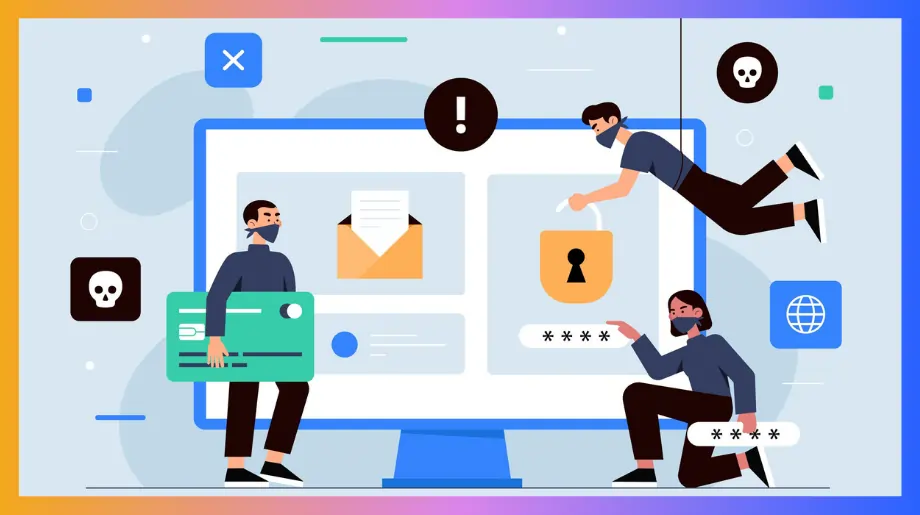You're facing a real security problem. Hackers break passwords daily. Your systems are growing. Users are multiplying. Compliance rules keep getting stricter.
Here's what works. Token-based authentication changes everything. No more password headaches. You get cryptographic protection that grows with you.
This guide shows you exactly how to implement token-based authentication. Everything you need is right here.
What Is Token-Based Authentication?
Token authentication is the modern way to prove your identity without constantly sharing passwords. It's faster, safer, and works perfectly across multiple apps and services.
- Instead of typing credentials repeatedly, you get a special digital pass proving your identity. This eliminates sharing sensitive passwords constantly.
- You login once with your password and the system verifies you. Then it provides a unique authentication token for safe access.
- You never share your actual password again when you show your token. Servers validate the token and grant entry immediately.
- Your token has an expiration date built in and becomes useless when expired. This limits damage if stolen or compromised.
- Everything important lives inside the token like identity, permissions, expiration time. All wrapped in unbreakable cryptographic code preventing tampering.
Why We Need Token-Based Authentication Today?
Traditional password systems are getting destroyed by hackers every day. Modern businesses need something that can handle millions of users. They need systems that work across different platforms and actually stop cyber attacks.
Here’s why token-based authentication matters now:
- Your current login system is probably already compromised. Hackers steal passwords faster than you can change them. Your traditional sessions break under pressure and create massive security holes that cost you millions.
- Your modern apps run on dozens of different servers and locations. Session-based authentication can't handle this complexity. It creates bottlenecks for you. It crashes under load and makes scaling impossible when your business grows.
- Compliance rules are getting stricter every year. GDPR, HIPAA, and other regulations demand better security from you. Token systems give you the audit trails and access controls you need. They help you avoid massive fines and legal trouble.
- Token-based authentication example scenarios show how companies cut costs by 60% while improving security. You get no more server crashes from session storage. No more database overload from constant lookups. Everything runs smoother and faster for you.
- Cross-platform integration becomes simple when you use tokens. Your mobile apps, web services, and third-party APIs all work together seamlessly. You get one authentication method that works everywhere. No more managing separate systems for each platform.
How Does Token-Based Authentication Work?
Understanding how tokens work will change how you think about security forever. It's actually simpler than you think but incredibly powerful when done right.
Step 1: Initial Login and Credential Verification
You start by logging in with your username and password just once. The system checks your credentials against its database. If everything matches, it creates a special coded message just for you. This becomes your digital key.
Step 2: Token Creation and Packaging
The system packages all your important info into this token. Your user ID, your permissions, when it expires. Everything gets wrapped in unbreakable cryptographic code. Nobody can fake it or change it without the system knowing.
Step 3: Token Validation Process
Here's what makes it powerful. Every time you want to access something, you just show your token. The server reads it, checks if it's real, and lets you in. No password typing. No database lookups. No session storage mess.
Step 4: Request Processing with Token
When you implement token based authentication, the token travels with every request you make. It goes in the header of your web requests. The receiving server validates the signature and checks if you're allowed to do what you're asking.
Step 5: Automatic Expiration and Refresh
Your token has a built-in expiration timer. When time runs out, it becomes useless automatically. This protects you even if someone steals it. Most systems also give you a refresh token that gets you a new one without logging in again.
Types of Token-Based Authentication
Different types of tokens serve different security needs and business requirements. Choosing the right type can make or break your entire authentication strategy.
Core Authentication Tokens
- Access Tokens - These are your main authentication credentials. They prove who you are and what you can do. Most access tokens last 15-30 minutes before expiring. They contain your user ID, permissions, and expiration time. Think of them as temporary keys that open specific doors in your application.
- Refresh Tokens - These get you new access tokens without logging in again. They live longer than access tokens, usually 7-30 days. When your access token expires, the refresh token automatically gets you a fresh one. This keeps users logged in while maintaining security. They're like having a spare key that works even when your main key expires.
- ID Tokens - These tell you who the user is but not what they can access. They contain identity information like name, email, and profile data. These tokens come from identity providers during authentication. They're perfect for displaying user information in your app. Think of them as digital ID cards that prove identity without granting permissions.
- JWT Tokens - These are the most popular format for modern authentication. They're self-contained and carry everything needed for validation. The three parts - header, payload, and signature - work together seamlessly. No database lookups required because all user data travels with the token. They work across any platform and scale infinitely.
- API Tokens - These authenticate applications instead of users. They're long-lived credentials for server-to-server communication. Each API token has specific permissions and rate limits. They're perfect for automated systems and third-party integrations. Think of them as permanent passwords for your applications.
Other Token Types
- Software tokens are digital codes generated by mobile apps. No physical hardware needed.
- Hardware tokens are physical devices like USB keys providing maximum security.
- SAML tokens use XML format and work great for enterprise single sign-on.
- Connected tokens plug into devices through USB or card readers.
- Contactless tokens work through NFC or Bluetooth for quick access control.
What Is a JSON Web Token (JWT)?
JWT is the king of modern authentication tokens. It's what most successful companies use today because it's simple, secure, and works everywhere without any headaches.
JWT stands for JSON Web Token and it's basically three parts stuck together. A header that tells you what type it is. A payload with your actual user data. And a signature that proves nobody messed with it.
- The beautiful thing about JWT is that it carries everything inside itself. Your user ID, permissions, expiration time. The receiving server doesn't need to call any database to check if you're legit. Everything it needs is right there in the token.
- JWT token based authentication uses strong cryptographic algorithms to protect your data. HMAC, RSA, or ECDSA signatures make it impossible for hackers to create fake tokens. Even if they try to modify yours, the signature breaks and exposes the attack.
- Each part of the JWT gets encoded in Base64URL format. This makes it safe to send through web browsers and mobile apps. You can put it in HTTP headers, URL parameters, or POST data without breaking anything.
- JWT tokens are stateless by design. This means your servers don't need to remember anything about logged-in users. They just validate the token signature and trust what's inside. This makes scaling to millions of users incredibly easy.
- The expiration feature protects you automatically. Every JWT has a built-in timer that makes it useless after a certain time. Even if someone steals your token, they can't use it forever.
Pros and Cons of Token-Based Authentication
Token systems aren't perfect but they're way better than anything else available today. Understanding both sides helps you make the right choice for your business.
Pros
- Scalability becomes effortless with tokens. Your servers don't store any session data so adding more servers is simple. You can handle millions of users without breaking a sweat. Traditional session systems crash when traffic spikes but tokens keep working.
- Security gets a massive upgrade when you switch to tokens. Cryptographic signatures make forgery impossible. Built-in expiration limits damage from theft. No more session hijacking or fixation attacks that plague old systems.
- Cross-platform integration works seamlessly with tokens. Your web app, mobile app, and APIs all use the same authentication method. No more maintaining different login systems for each platform. Everything just works together.
Cons
- Implementation complexity is the biggest downside you'll face. You need to understand cryptography, key management, and proper validation. Get it wrong and you create security holes. Most developers struggle with this initially.
- Client-side storage creates new attack vectors you didn't have before. Tokens live on user devices where malware can steal them. XSS attacks become more dangerous because they can grab your authentication credentials directly.
- Token size limitations can hurt performance in some cases. Large tokens slow down every request. HTTP headers have size limits. You might need to make additional API calls to get user data that doesn't fit in the token.
Is Token-Based Authentication Secure?
Yes, Token authentication is incredibly secure when implemented correctly. But like any powerful tool, it can become dangerous in the wrong hands. Poor implementation creates serious security holes.
The cryptographic foundation makes tokens nearly unbreakable. Modern algorithms like RS256 and ES256 use mathematical problems. These would take thousands of years to crack. Even supercomputers can't forge a properly signed token without the secret keys.
Implementation mistakes kill security faster than anything else. The famous "alg: none" vulnerability let attackers create unsigned tokens. This bypassed all security completely. Proper implementation is crucial for maintaining security.
Key Security Considerations
- Client-side storage remains your biggest security challenge. Tokens stored in browser localStorage get stolen through XSS attacks. You need bulletproof storage strategies.
- Token theft happens but the damage stays limited. Unlike stolen passwords that work forever, tokens expire automatically. Refresh token rotation makes stolen credentials useless.
- Network security still matters even with strong tokens. HTTPS encryption protects tokens during transmission. Never send tokens over unencrypted connections.
- Key management determines your overall security level. Weak keys destroy everything regardless of algorithm strength. Regular rotation limits damage from breaches.
Poor key management creates massive holes that hackers love. Weak algorithms do the same. Sloppy validation makes things worse. Understanding proper implementation is essential for maintaining security.
5 Token-Based Authentication Best Practices
Following these practices will save you from security disasters and expensive mistakes. Most companies that get hacked ignore these basic rules.
- Choose strong cryptographic algorithms and stick to them. Use RS256 or ES256 for maximum security. Never touch HS256 in distributed systems because it requires sharing secret keys. Implement algorithm whitelisting to prevent downgrade attacks that bypass your security completely.
- Keep your tokens short-lived but user-friendly. Set access tokens to expire in 15-30 minutes max. Use refresh tokens that last 7-30 days for convenience. Implement automatic refresh so users don't get logged out constantly. This balance protects you while keeping users happy.
- Store tokens securely on every platform you support. Use HttpOnly cookies with Secure flags for web apps. Leverage iOS Keychain or Android Keystore for mobile apps. Never put tokens in localStorage where XSS attacks c=an steal them easily.
- Validate everything before trusting any token. Check signatures first, then expiration times, then audience claims. Verify the issuer matches your trusted sources. One missed validation step creates a backdoor for attackers to exploit.
- Monitor token usage patterns religiously. Log every authentication event with timestamps and locations. Set up alerts for impossible travel scenarios. Track failed validation attempts that might indicate attack attempts. Your logs will save you when incidents happen.
Making the Move Towards Token Authentication
The shift to token-based authentication isn't optional anymore. It's essential for modern businesses that want to stay secure and competitive.
The benefits are clear. Better security, improved user experience, and easier scaling. Companies using token authentication report 60% fewer security incidents. They save thousands in IT support costs. Their users log in faster and more securely.
Implementation requires careful planning and the right tools. This is where modern
Why Infisign Leads Token-Based Authentication
Infisign offers the most comprehensive token-based authentication solution available today. Our platform addresses every challenge you've read about in this guide:
- Passwordless JWT Authentication - Eliminate password vulnerabilities completely. Users authenticate with biometrics, passkeys, or mobile devices. Our JWT tokens carry all necessary user data securely.
- Universal SSO with Token Support - One login grants access to all applications. Our platform generates secure tokens that work across web, mobile, and API endpoints. No more managing multiple authentication systems.
- AI-Powered Token Management - Automated token lifecycle management with intelligent expiration policies. Our AI assistant handles access requests based on user roles and behavior patterns.
- Zero Trust Token Architecture - Every token request is verified regardless of source. Our platform uses cryptographic proofs and device attestation for maximum security.
- Multi-Factor Token Generation - Combine biometrics, device passkeys, and contextual factors. Our tokens include risk-based authentication data for adaptive security.
- Seamless API Token Integration - Perfect for developers building modern applications. Our REST APIs generate and validate tokens across any platform or programming language.
- Enterprise-Grade Token Security - Hardware-backed token signing with automatic key rotation. We use military-grade encryption and secure enclaves for token generation.
- Compliance-Ready Token Audit - Complete audit trails for every token issued and validated. Our platform helps you meet GDPR, HIPAA, and other regulatory requirements.
Ready to transform your authentication? Contact Infisign today for a free consultation. See how our token-based platform can secure your business and delight your users.
FAQs
What is the difference between password-based and token-based authentication?
Password systems make you type credentials every single time and store vulnerable session data on servers. Token systems give you a cryptographic pass after one login that works everywhere without server storage. Tokens scale infinitely, integrate seamlessly across platforms, and use unbreakable mathematical protection. Your password sessions get hacked easily but tokens expire automatically even if stolen.
What are the disadvantages of token-based authentication?
Token systems aren't perfect and come with real challenges you need to handle.
- Implementation complexity hits you first because you need cryptographic knowledge that most developers lack.
- Client-side storage creates new attack vectors where XSS can steal your tokens. Token size limits hurt performance and HTTP headers have restrictions.
- Immediate revocation becomes nearly impossible in distributed systems. Key management requires serious expertise and mistakes create massive security holes.






















